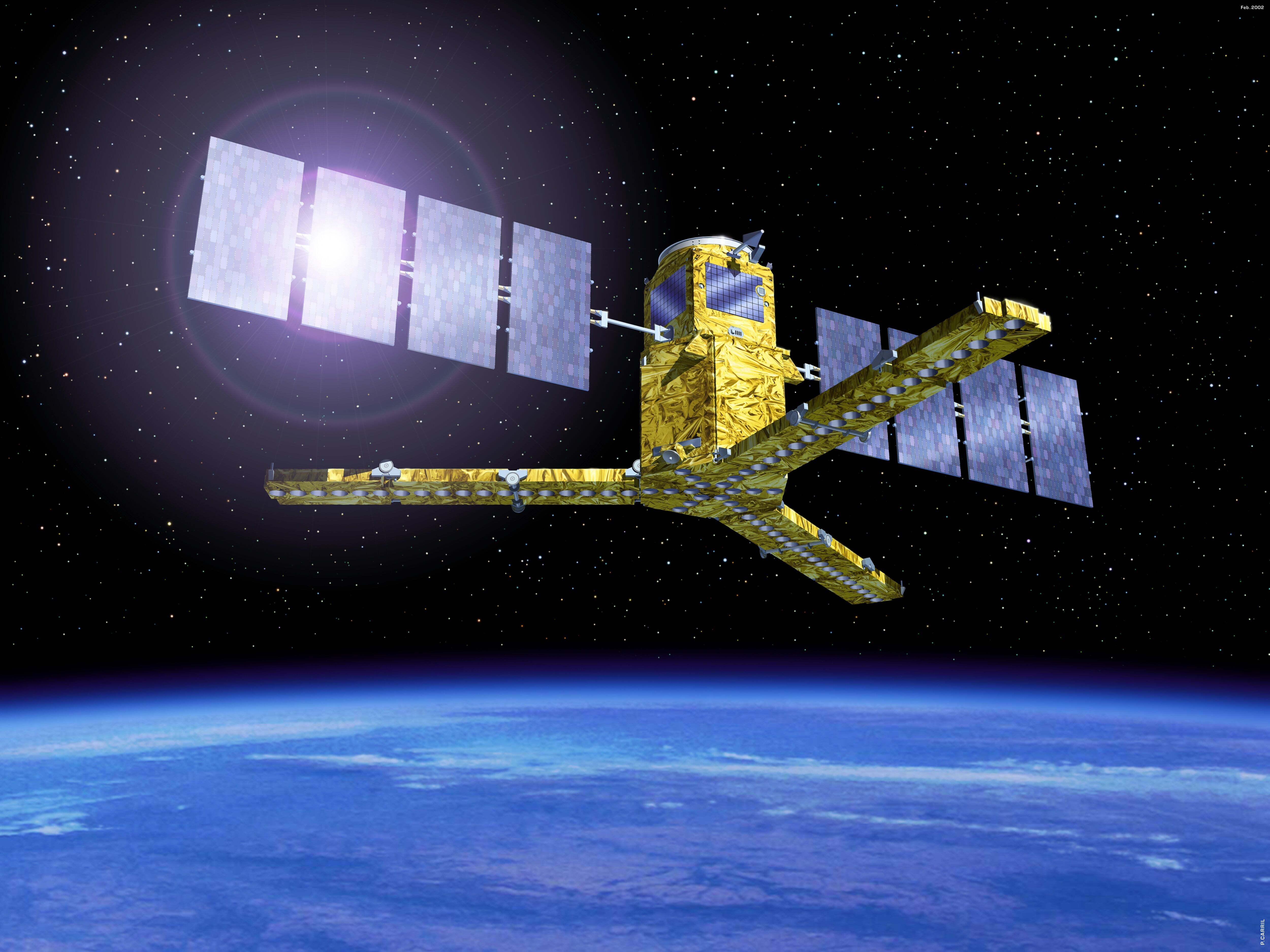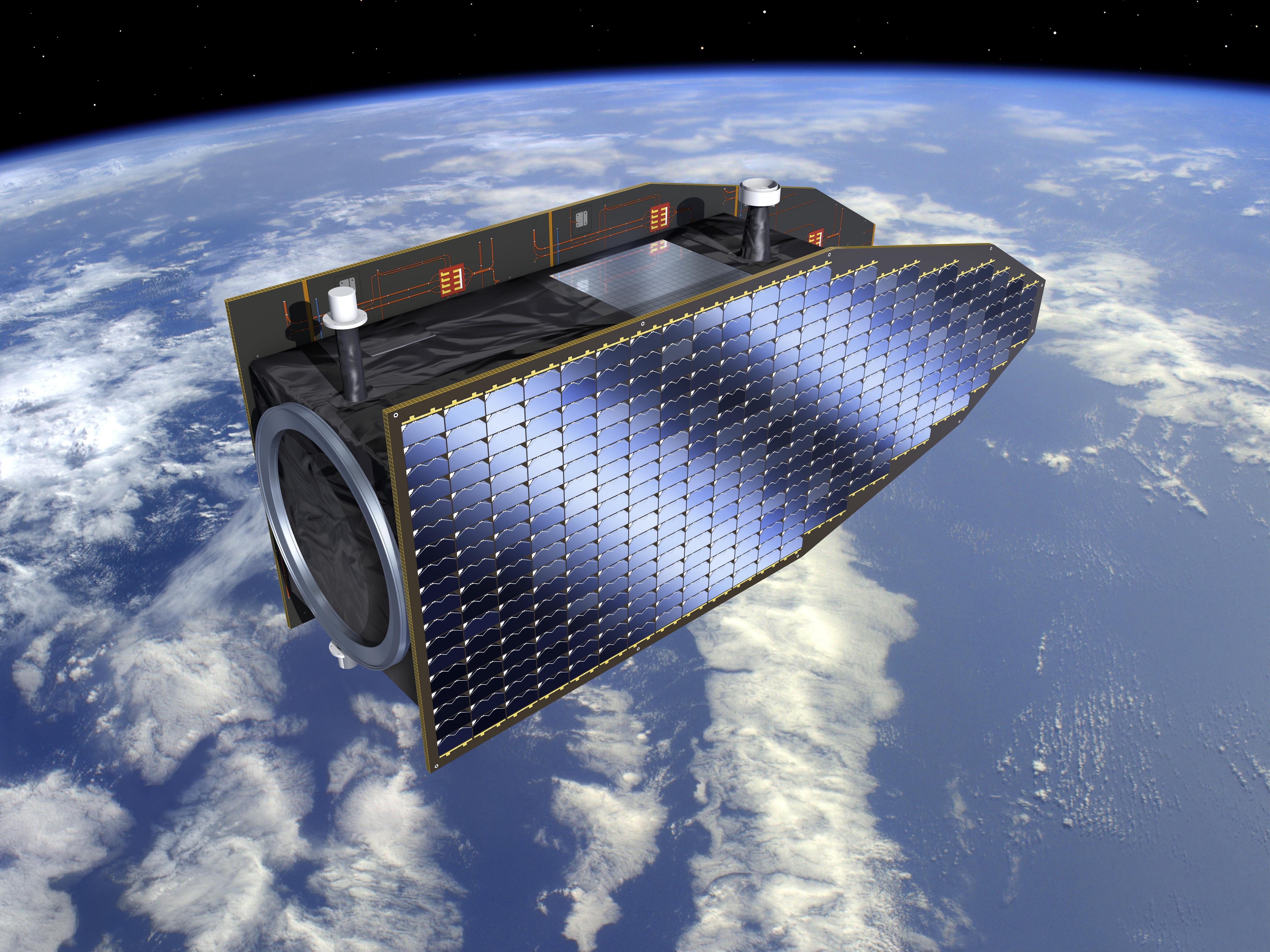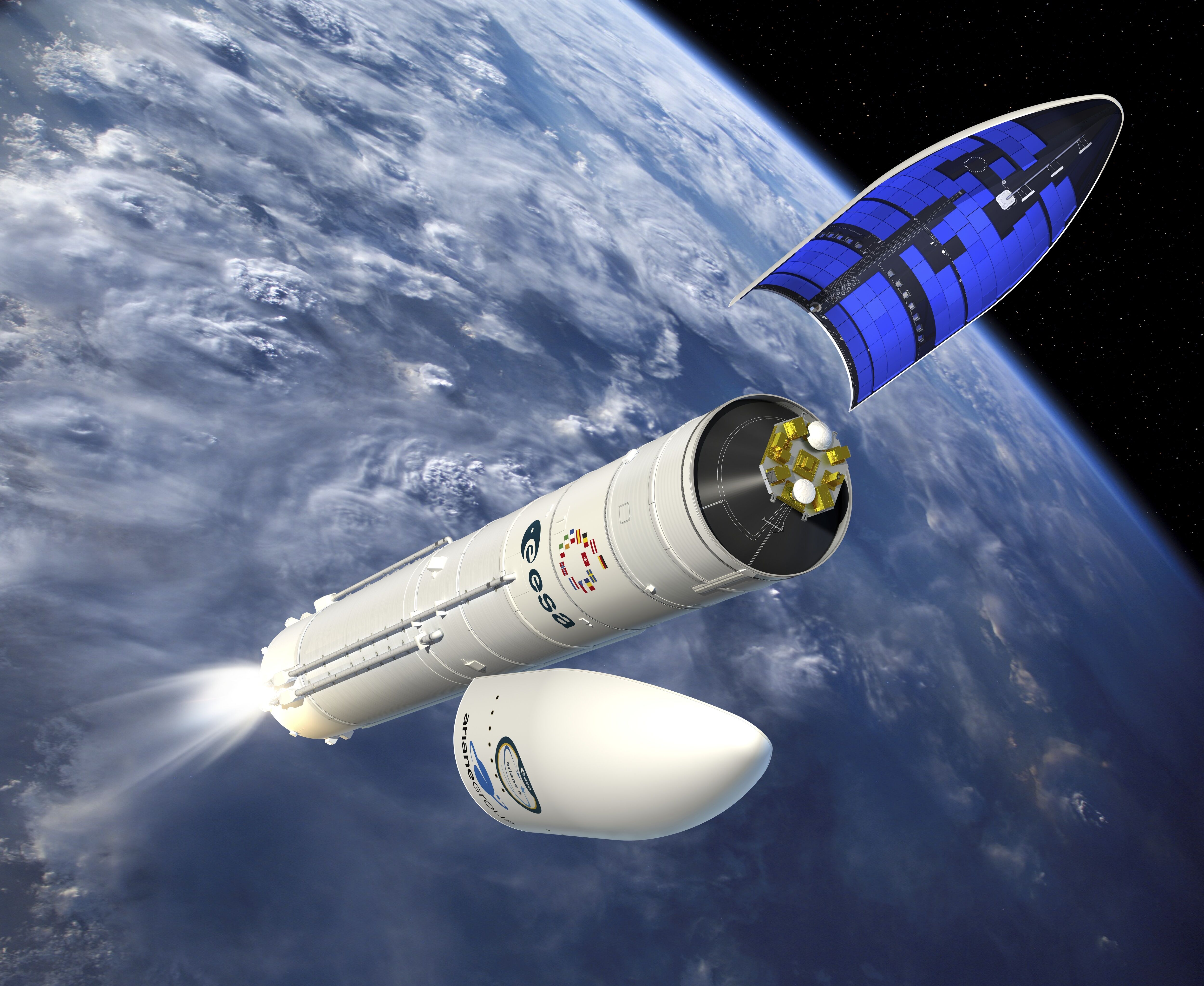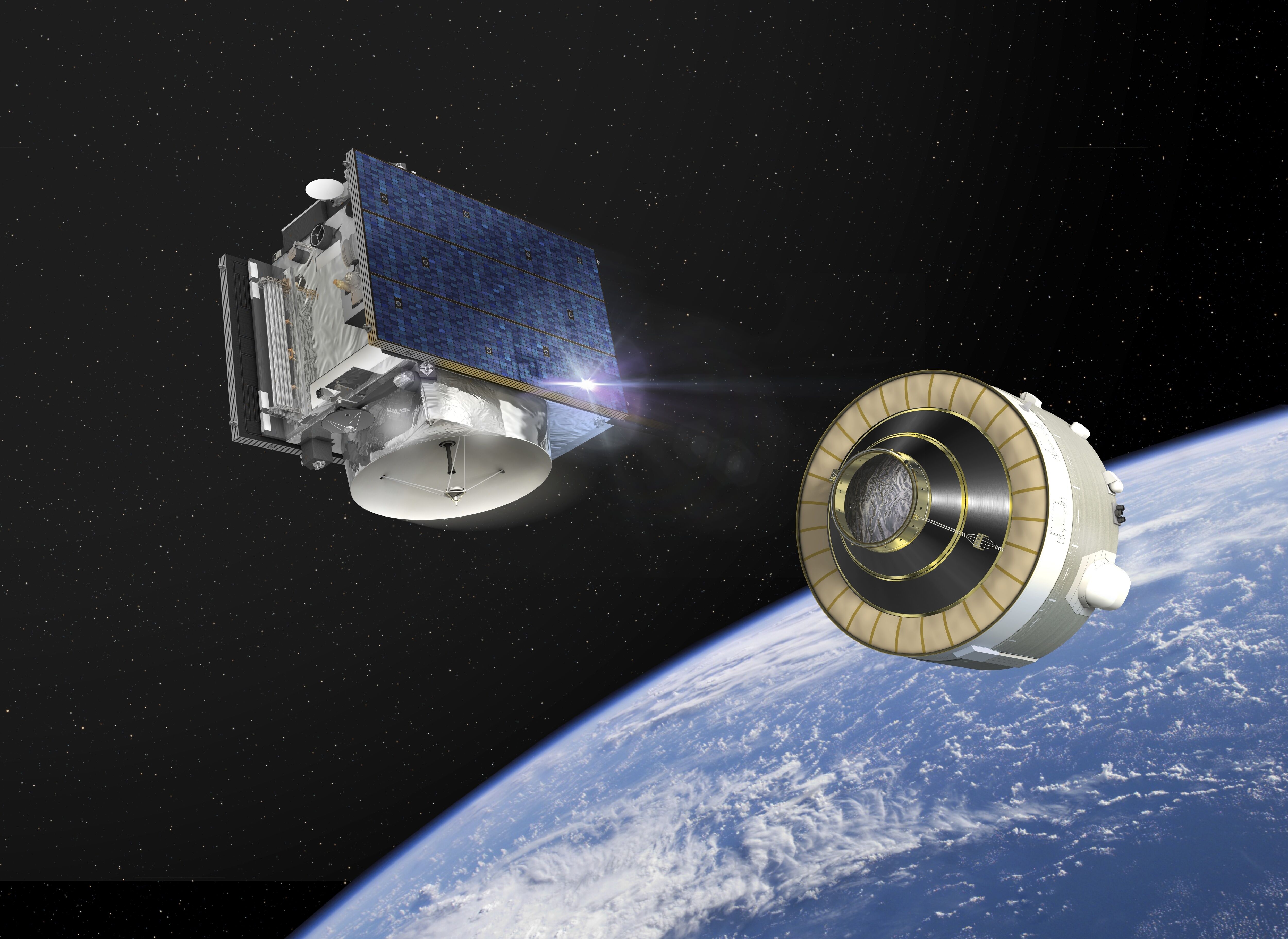
SMOSArtist's Impressions - Various
SMOS artist view
Please sign in to download.
SMOS artist view. The processes within the atmosphere and their interactions with the other geospheres are responsible for our weather and climate. Therefore Global Circulation Models (GCMs) as used for weather and climate predictions, account for energy and matter exchange occurring at the interfaces of the different geospheres. The interactions occurring at the land - atmosphere interface are modelled by Soil – Vegetation – Atmosphere – Transfer (SVAT) models, which describe the partitioning of the different fluxes. Soil moisture controls this partitioning. This illustrates the importance of observing and monitoring the soil moisture fields. Weather, climate, and extreme events forecast will all benefit from having such observations available on a routine basis. It is commonly known that ocean currents are regulating our climate. The Gulf Stream for instance transports warm surface water from the Caribbean to Europe, which is the reason for the moderate winter season in Europe. As the Gulf Stream moves north from the equator the water cools, gets saltier due to evaporation and becomes very dense. When it becomes dense enough it sinks and travels back in the deep ocean to the equator where it warms again, becomes less salty and rises again. Sea surface salinity is therefore one of the key variables for monitoring and modelling the ocean circulations, which are important indicators for climate change. The main objective of the Soil Moisture and Ocean Salinity (SMOS) mission is to globally observe soil moisture and ocean salinity, two crucial variables for modelling our weather and climate. A secondary objective of the mission is to provide observations over ice/snow regions to characterise the ice and snow layers for studies of the cryosphere.



















